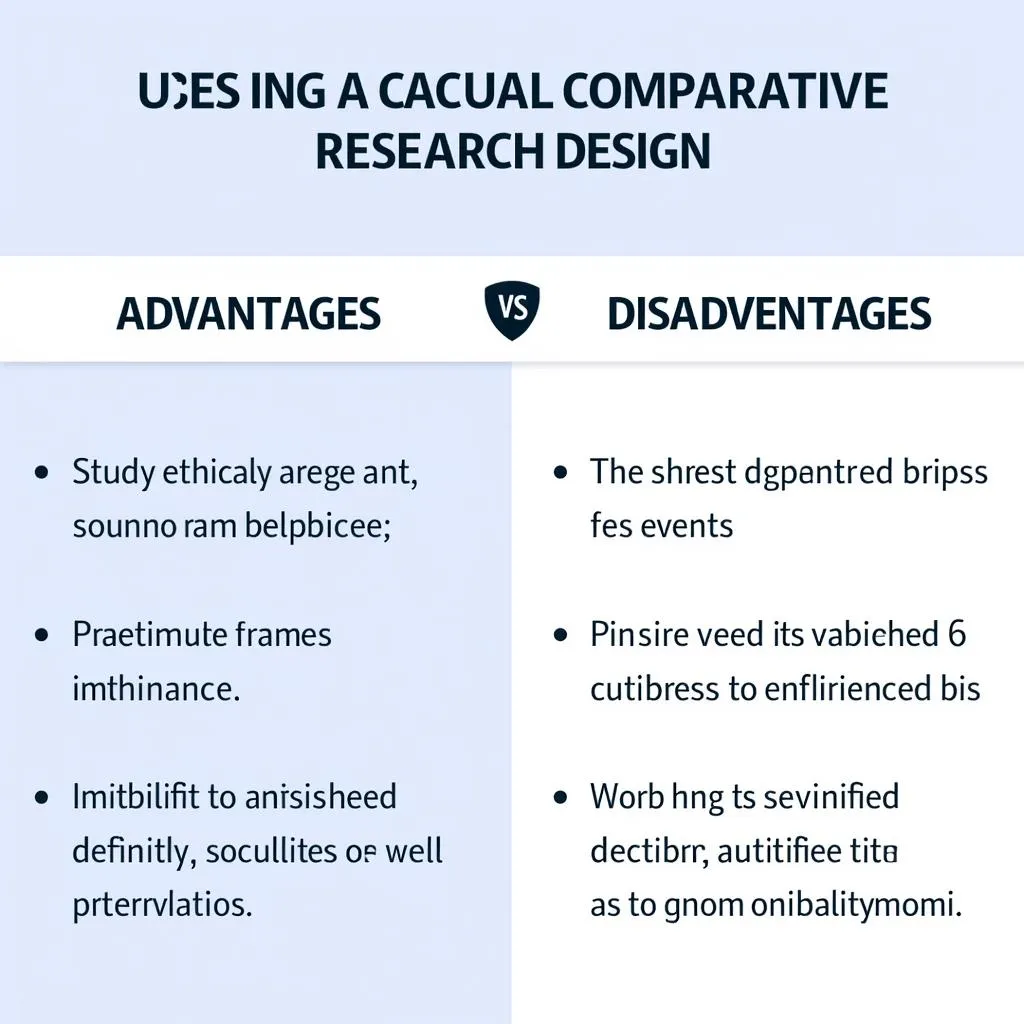Causal comparative research, also known as ex post facto research, is a type of research design used to examine the potential cause-and-effect relationship between variables. This method is employed after the variation in the independent variable has already occurred naturally, without manipulation by the researcher. Instead of directly controlling the independent variable, researchers observe pre-existing groups that differ on the variable of interest.
Understanding the Basics of Causal Comparative Research
In essence, causal comparative research seeks to answer the question: “Does a difference in X cause a difference in Y?” Here, X represents the independent variable, while Y stands for the dependent variable. For example, a researcher might be interested in exploring whether a difference in parenting styles (independent variable) leads to a difference in children’s self-esteem (dependent variable).
 Example of Causal Comparative Research
Example of Causal Comparative Research
Key Features of Causal Comparative Research
Several key features distinguish causal comparative research:
- Non-manipulation of the Independent Variable: The independent variable is not manipulated; it has already occurred.
- Group Comparisons: Researchers compare two or more groups that differ in their exposure to the independent variable.
- Retrospective Analysis: Data are often collected after the independent variable has influenced the groups.
- Exploration of Causality: While not definitively proving causation, the design helps to identify potential causal relationships.
When to Use Causal Comparative Research
This research design is particularly useful when:
- Ethical considerations prevent the manipulation of the independent variable. For instance, it would be unethical to randomly assign participants to smoking and non-smoking groups to study the effects of smoking.
- Practical limitations make manipulating the independent variable impossible.
- Investigating naturally occurring events or phenomena that have happened in the past.
 Advantages and Disadvantages of Causal Comparative Research
Advantages and Disadvantages of Causal Comparative Research
Steps in Conducting Causal Comparative Research
- Identify the Research Question: Clearly define the independent and dependent variables and formulate a focused research question.
- Select the Comparison Groups: Choose groups that differ significantly on the independent variable while being as similar as possible in other relevant aspects.
- Collect Data: Employ various data collection methods, such as surveys, interviews, or existing records, ensuring consistency across groups.
- Analyze Data: Utilize statistical techniques to compare the groups on the dependent variable, controlling for potential confounding variables.
- Interpret Results: Carefully consider the limitations of the design and avoid making overgeneralizations about causality.
Causal Comparative Research in Action: An Example
Imagine a researcher wants to investigate the relationship between participation in extracurricular activities and academic achievement in high school. They could use a causal comparative design by comparing the GPA of students who participate in extracurriculars to those who don’t.
 Interpreting Causal Comparative Research Results
Interpreting Causal Comparative Research Results
Dr. Emily Carter, an educational psychologist, notes: “Causal comparative research allows us to examine important questions in real-world settings, especially when ethical or practical constraints prevent us from conducting true experiments. While we must be cautious about inferring causality, this method provides valuable insights into potential relationships between variables.”
Conclusion
Causal comparative research provides a valuable tool for exploring potential cause-and-effect relationships when manipulating variables directly is not feasible. While this method cannot definitively prove causation, it offers a practical approach to investigating important questions across various fields. By carefully considering the limitations and interpreting the findings cautiously, researchers can leverage causal comparative research to advance our understanding of complex phenomena.